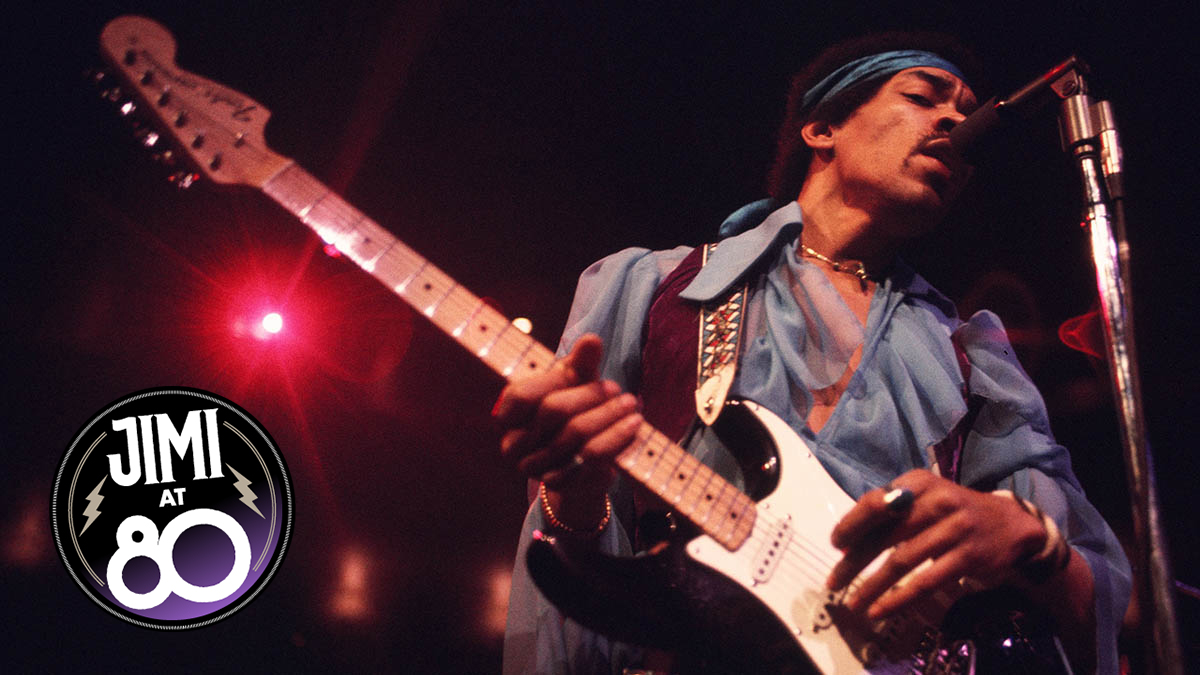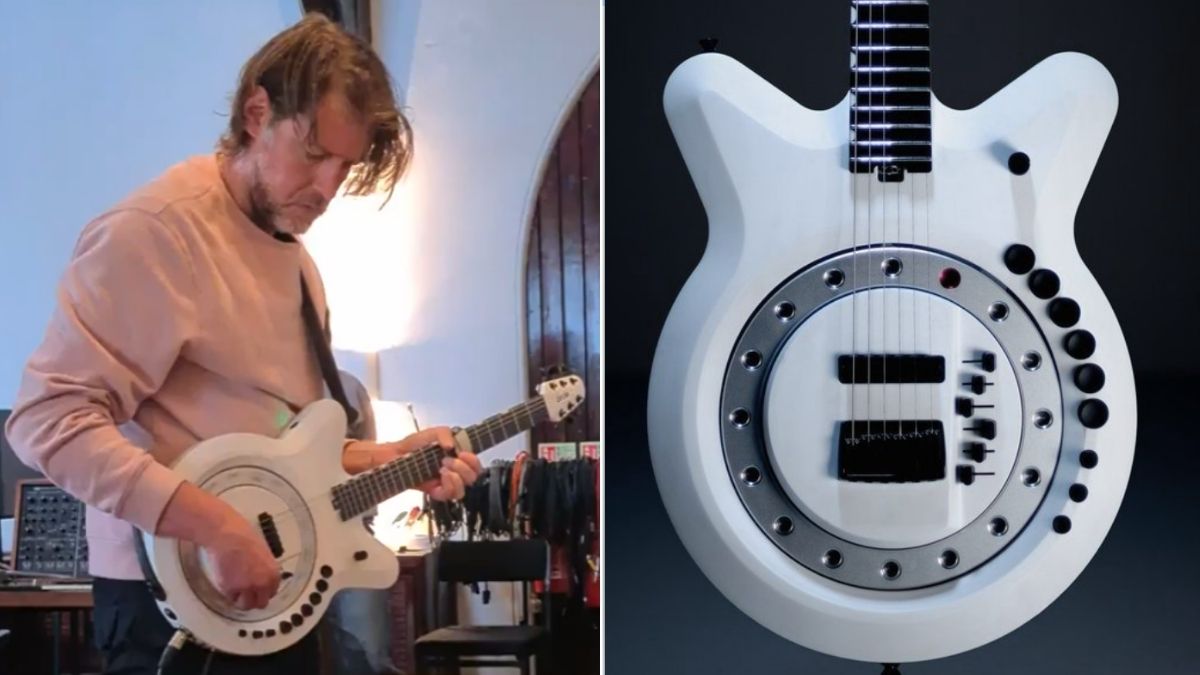5 times Jimi Hendrix proved he was a master of the blues
On the week the G.O.A.T. would have turned 80, we dig into the crates for a handful of tracks of unalloyed genius

Jimi at 80: Born in Seattle on November 27, 1942, Jimi Hendrix would have celebrated his 80th birthday this week. Throughout this week on Guitar World, we'll celebrate his genius and game-changing impact on the world of guitar playing.
In the tradition of many itinerant bluesmen before him, Jimi Hendrix spent his formative years travelling around North America, from his upbringing in Vancouver and Seattle, down to the birthplace of the blues, the Deep South.
“I was largely influenced by blues artists when I first started,” he said, picking up inspiration from his father’s record collection and other musicians. “The first guitarist I was aware of was Muddy Waters. I heard one of his old records when I was a little boy and it scared me to death. Wow, what is that all about?”
It was in the South, though, as a professional musician on the ‘chitlin’ circuit’, that he developed his unique musical style, fused from a combination of Delta blues, R&B, rock ’n’ roll and soul. He encountered many blues musicians on the way, including Albert King, who made a considerable impact on Hendrix’s artistic development.
When his new manager Chas Chandler brought him to England, it was no surprise that the preeminent guitarists of the British Blues boom, including Eric Clapton, Jeff Beck and Brian Jones, considered him the real deal. He was immediately recognised as inspiration, competition, and a visionary pointing to the future of blues music.
And what a future that was: loud, sensitive, joyous, agonised and cosmic in its scope. The new blues sound Jimi forged was inspired by the electric performances of blues greats like Buddy Guy, channelled through the latest technology, including his Fuzzface, Vox Wah pedal and 100 Watt Marshall stacks. It was a sound like nothing ever heard before.
Throughout his career, Hendrix incorporated all the blues guitar trademarks in his own inimitable style: simultaneous lead and rhythm playing, pentatonic licks, emotive trills, screeching solos and blistering shred-like runs. But more than anything, it was the feel of the blues that Hendrix inherited and passed on to a new generation.
All the latest guitar news, interviews, lessons, reviews, deals and more, direct to your inbox!
As legendary blues guitarist John Lee Hooker said, quoted in the original CD booklet for the Hendrix Blues album: “He could play the hard blues. Anybody can put the clothes on, but everyone can’t produce it. It’s got to come from the soul. He was the greatest guitar player that was ever born. I can’t say enough about him. He could play deep blues.”
1. Red House, from Los Angeles Forum: April 26, 1969 (2022)
This Hendrix original first saw the light of day on the UK version of the Jimi Hendrix Experience’s debut album, Are You Experienced. According to Hendrix it was excluded from the American release because he was told ‘Americans don’t like blues, man.’
It was the first 12-bar blues of many that he would record, and immediately showcased his loose, effortless style, with notes, phrases and chords tumbling from his fingers. The song became a live favourite, prompting some of his longest onstage jams, very often going over ten minutes in length.
The version on the newly released Los Angeles Forum set was recorded during the band’s last North American tour. Starting at a comfortable slow tempo, Jimi plays gentle arpeggios and sweet melodies on his 1968 Fender Stratocaster.
The pace picks up in intensity, when Mitch Mitchell’s drums thunder forward and Jimi pushes his futuristic fuzz and wah sound into the stratosphere. Later the band go into a jazz swing feel and Hendrix experiments with partial chord playing and funky scratching on muted strings, before returning with his sweet crying tone to see the song out.
2. Voodoo Chile, from Electric Ladyland (1968)
Starting life as a version of the Muddy Waters-inspired Catfish Blues, this song was renamed by Hendrix after a review in Rolling Stone dubbed his last album ‘the finest voodoo album that any rock group has ever produced.’
There are plenty of legends about Hendrix’s involvement with voodoo, including claims he developed his extraordinary guitar playing prowess after engaging in shamanic ceremonies in the Deep South blues scene, echoing legends of Robert Johnson’s pact with the devil.
This early morning all-star jam session featured some of the best blues-inspired musicians of the rock scene, including Jack Cassady on bass and Traffic’s Stevie Winwood on organ. Over 15 minutes of improvisation, Hendrix trades licks with Winwood, a blues master himself.
The two virtuosos drive each other to greater heights, with Hendrix occasionally lifting off from planet Earth into another stratosphere through his soaring lead breaks. British writer Charles Shaar Murray called the performance ‘a chronological guided tour of blues styles’. A day later it yielded Voodoo Child (Slight Return), one of Hendrix’s most enduringly popular recordings.
3. Hear My Train a Comin’, from Blues (1994)
This Hendrix original, which he often referred to as Getting My Heart Back Together Again, was recorded live and in the studio at various times, but never officially released during his lifetime.
The opening track on the posthumous Blues album features an acoustic version, recorded in December 1967 during a photo session for the filming of the documentary Experience (1968). The impromptu performance occurred when Hendrix picked up a nearby Zemaitis 12-string acoustic guitar, in standard C tuning, that happened to be strung for a left hander.
The tempo is slow, the beat heavy, and Hendrix is at the height of his powers, commanding his classic 1968 white Stratocaster with alternating blues licks, chromatic runs and crying melodies
It’s one of only two recorded examples of Hendrix’s acoustic guitar playing, made all the more remarkable in that it’s played on a 12-string acoustic. His dexterity with this unwieldy instrument provides a tantalising glimpse of what he could do with an acoustic, with triple time phrasing in the style of Tommy Johnson, and humming accompaniment in the John Lee Hooker style. The result is as close to authentic country blues as Hendrix got.
The final track on the Blues album is the definitive electric rendition of the same song, recorded live at the Berkeley Community Theatre in May 1970 with Billy Cox on bass and Mitch Mitchell on drums. The tempo is slow, the beat heavy, and Hendrix is at the height of his powers, commanding his classic 1968 white Stratocaster with alternating blues licks, chromatic runs and crying melodies.
4. Killing Floor, from Live at Monterey (1967)
The moment Hendrix broke through in his homeland is captured on this recording of the legendary Monterey concert. Introduced by Brian Jones of The Rolling Stones as ‘the most exciting guitar player I’ve ever heard,’ Hendrix appeared before an audience that barely knew him. By the end of his set, he’d pointed the way forward for blues rock.
Although The Who had played an explosive set earlier in the evening, they were followed by a relatively sedate forty minutes of psychedelic noodling by The Grateful Dead. So when Jimi kicked off with his take on the Howlin’ Wolf blues classic Killing Floor, the audience was awakened to the presence of something entirely new.
While white English musicians had been doing their best to reproduce the blues style of Chicago, Hendrix at once identified himself with its past, present and future: tripling the tempo, quadrupling the volume, before setting fire to it and birthing something completely fresh from its remains.
On this opening song of his set, Hendrix effortlessly shifts from rhythmic attack to throwaway licks and incendiary lead breaks, pushing his 1965/66 Black Fender Stratocaster way beyond its limits. Later on he switched to the hand-painted 1963/64 Strat for the shocking climax of his set, setting fire to his instrument and changing rock music forever.
5. Catfish Blues, from Blues (1994)
The Jimi Hendrix Experience recorded this blazing take of a traditional blues song in November 1967 at Vitus Studios, Bussem, Holland. This interpretation is inspired by Muddy Waters, starting with a slow, grinding groove, flamboyant trills and the sharp, abrasive riff, mixing in melody lines in unison with his vocal.
At 2:25 he starts to take it in a new direction, with partial chords and screaming lead runs, before reigning it back in and dropping out for Mitch Mitchell’s drum solo. At 5:25, Hendrix returns in full force, with his wah pedal and whammy bar providing fresh inspiration. At 6:30 he instigates a double-time gallop towards the song’s incendiary finale, his guitar howling at full volume as it crashes to a close.
- An unreleased live album, Jimi Hendrix Experience Los Angeles Forum: April 26, 1969, is out now on 2LP vinyl, CD and all digital platforms via Legacy Recordings. A new book, JIMI by Janie Hendrix and John McDermott, is out November 24.
